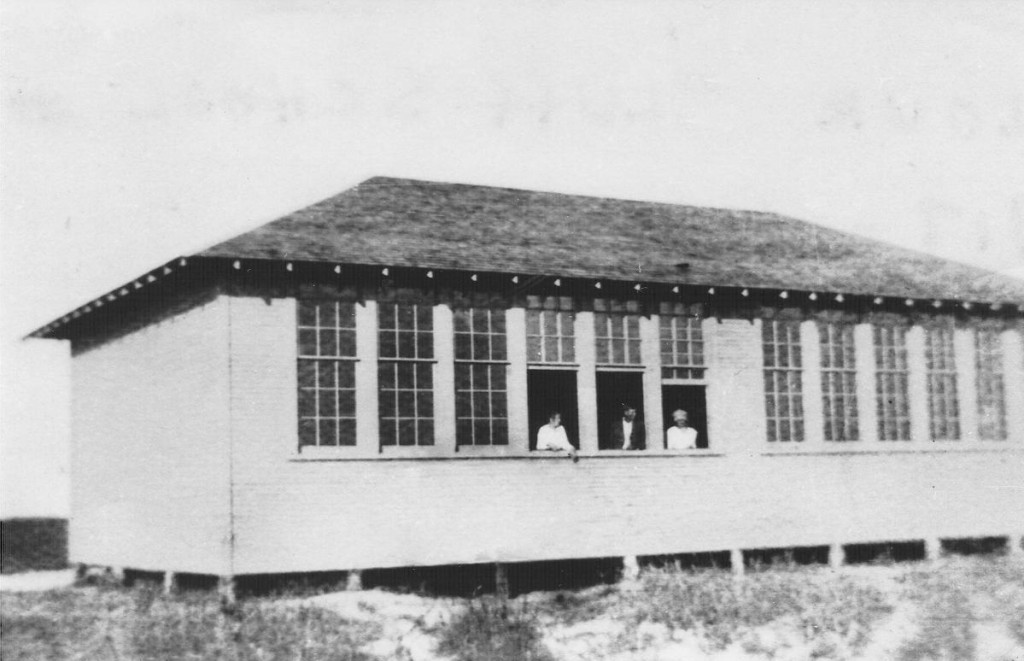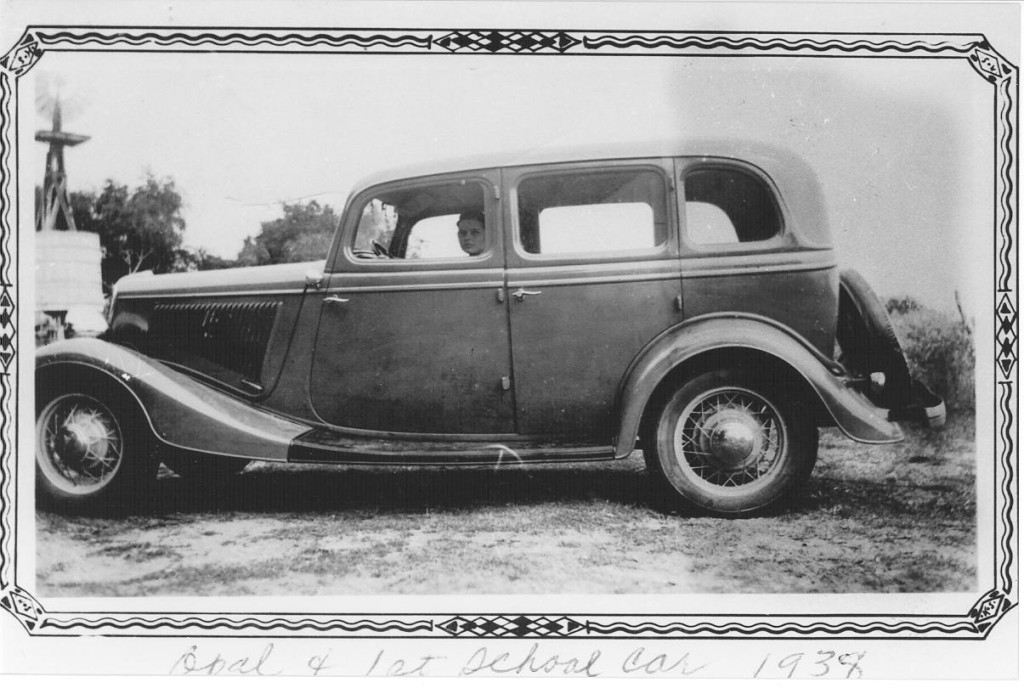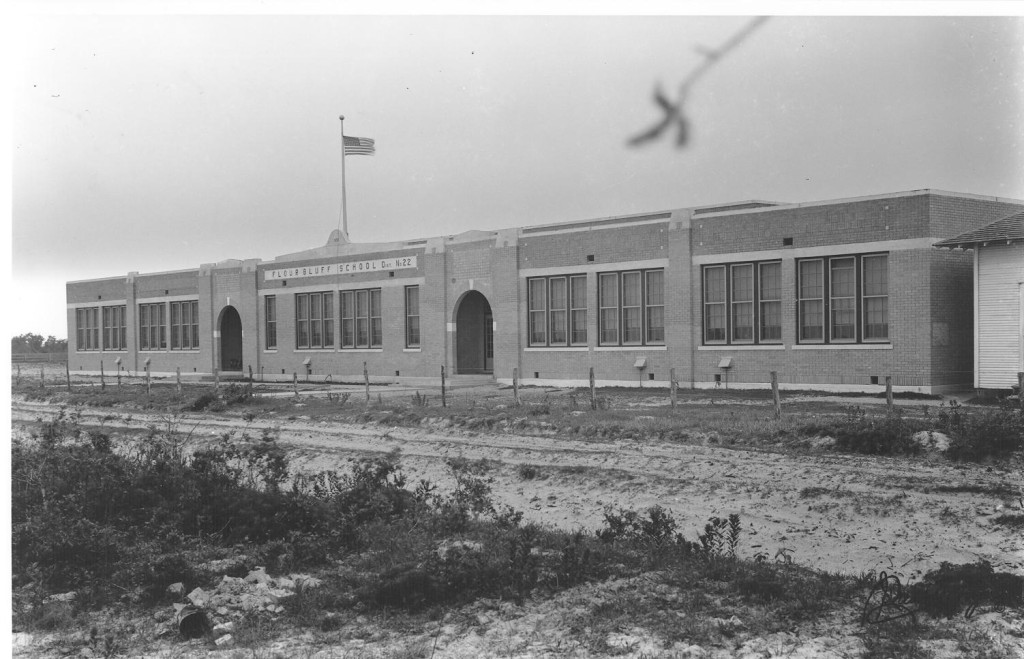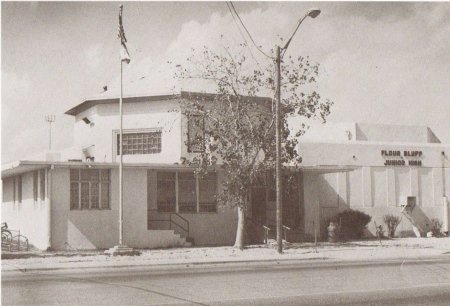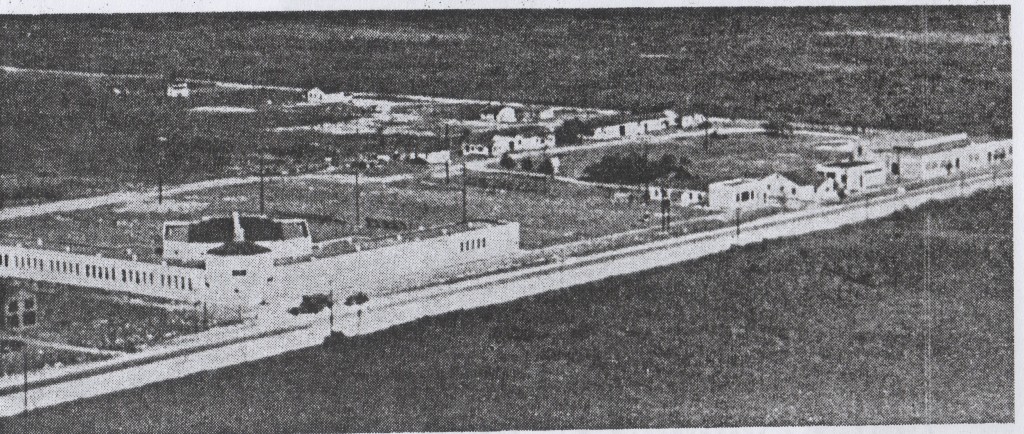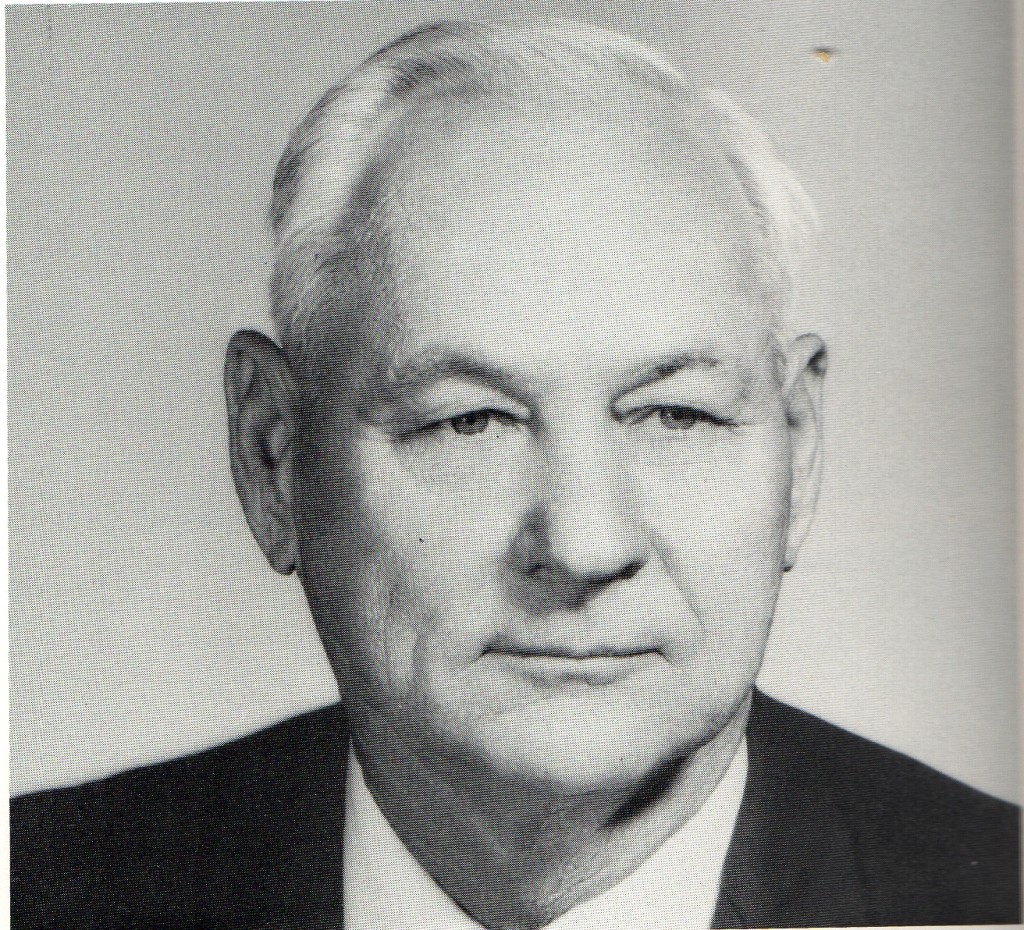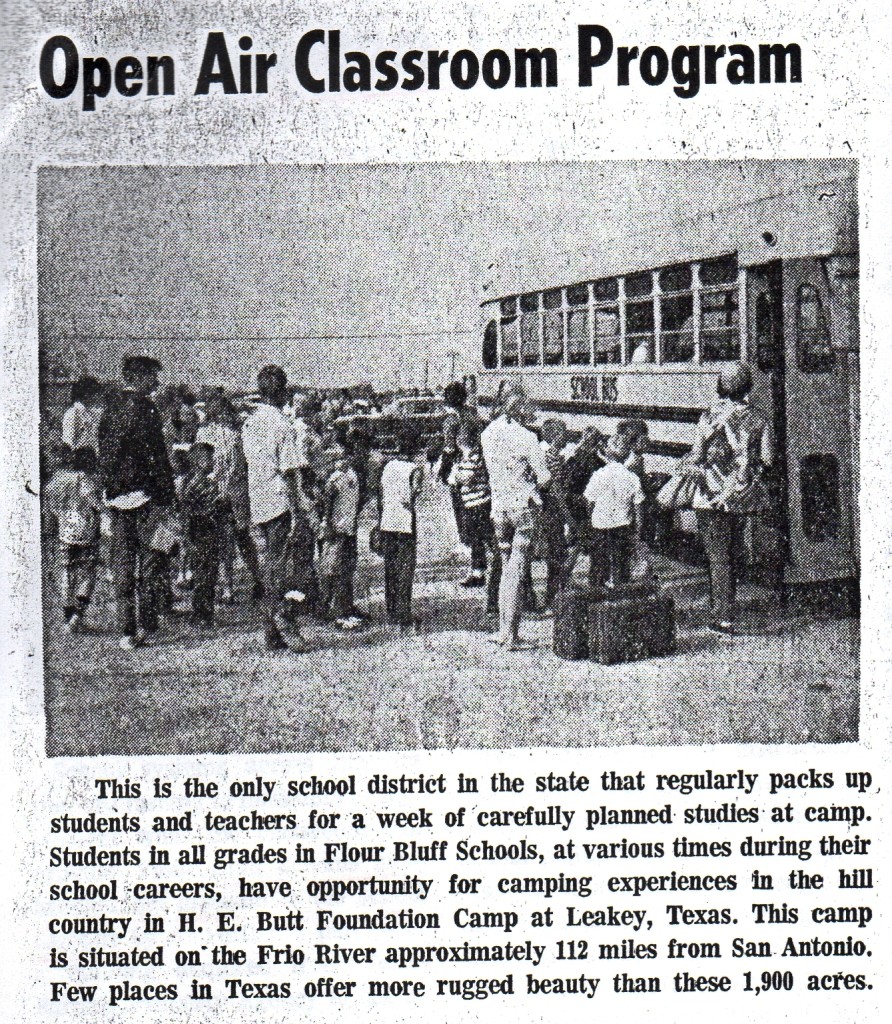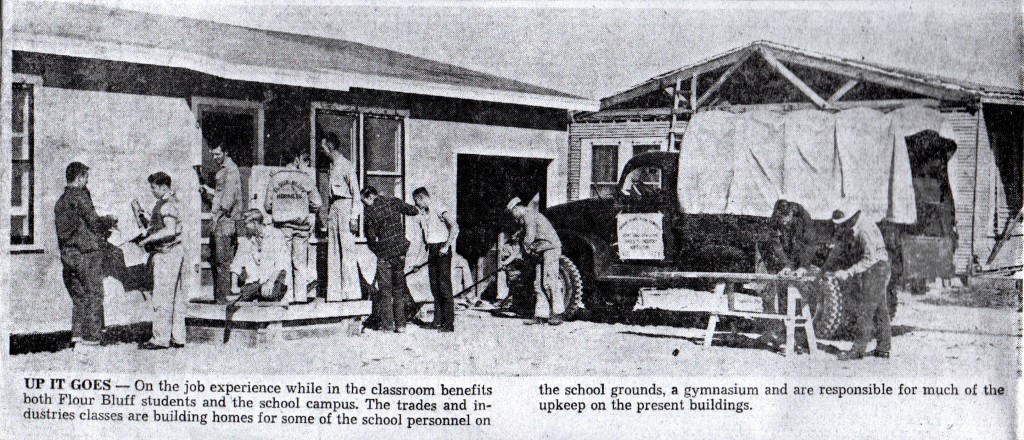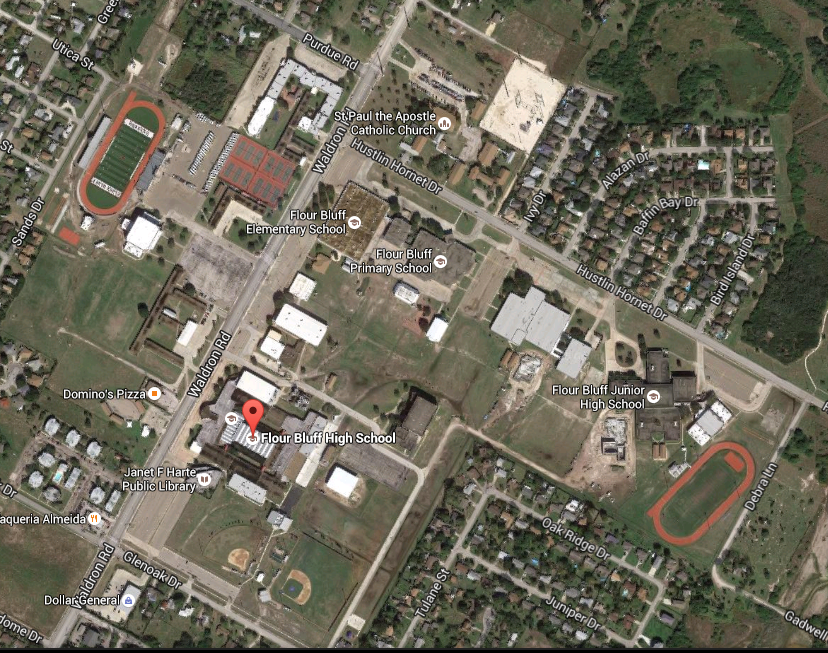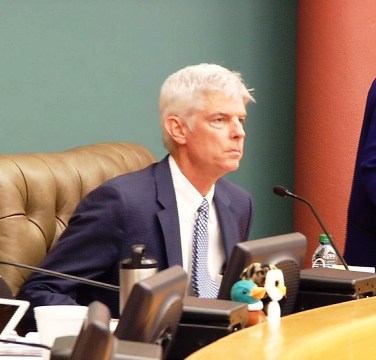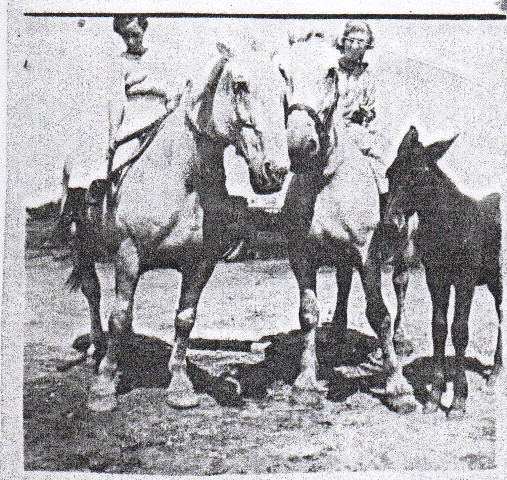The Beginning: 1892
[spacer height=”default”]
The Flour Bluff Independent School District was created by the convergence of three very divergent entities: oil and gas, ranching, and the Naval Air Station Corpus Christi. Through the use of student labor, frugality, and a visionary superintendent, it became a unique campus catering to a community with strong bonds.
The first school was opened in 1892 in the community of Brighton, later to become Flour Bluff. Precariously located next to the Laguna Madre, it served twenty-five students for a six-month term. In 1900, Miss Florence Savoy instructed twelve students for a total of four months. In 1916, the school board voted to replace the Brighton school; however, before it was completed, the hurricane of 1916 destroyed the building. Utilizing student labor once again, the school was rebuilt slightly inland where the Flour Bluff Early Childhood Center now sits.
[spacer height=”default”]
Influence of Ranching
[spacer height=”default”]
The schools that cropped up were scattered throughout the Flour Bluff region to accommodate the ranching families located in the area. 1920 saw the opening of Flour Bluff No. 2 at the north end of present-day Naval Air Station Corpus Christi. A third school, Flour Bluff No. 3, opened in 1926 and served the Flour Bluff students for two years. It was located at the Hannah Roscher home near Oso Creek, one mile north of King Ranch. Thirteen students attended at this location. In 1928 both Flour Bluff No. 2 and No. 3 were dissolved, and all students attended what became known as Flour Bluff No. 1, located once again at the 1916 site on Waldron Road. In 1932, the school board purchased a car to transport the students to Flour Bluff No. 1. Soon another industry would change the community’s idea of public education.[spacer height=”default”]
[spacer height=”default”]
Role of Oil and Gas
[spacer height=”default”]
In the 1930’s, oil and gas exploration came to the Flour Bluff area. In the midst of economic uncertainty throughout the United States, workers were drilling in Flour Bluff, and they were bringing their families. In 1937, a new brick building was constructed with the economic backing of Humble Oil. It was built adjacent to the Flour Bluff No. 1 at the Waldron Road and Purdue Street intersection. Although the community was increasingly becoming an oil and gas economy, the district was still very much a ranching area, and a fence had to be constructed around the school to prevent the intrusion of roaming cattle from the area ranches. World-wide events would soon reach the small community of Flour Bluff with yet another influence on education.
[spacer height=”default”]
[spacer height=”default”]
World War II Brings the Navy
[spacer height=”default”]
World War II brought the Navy to Flour Bluff, and with it came progress and innovation. In 1941, a new nineteen-room junior and senior high school was built next to the 1937 building. The high school required 18.5 accredited units, which was 2.5 more than what was required for college entrance at that time. The “Laboratory of Industry” was created as a vocational center for boys. It was the product of Principal A.L. Smith at the request of the federal government to train men to work at the Naval Station Training station plant. Families in the northern area of Flour Bluff would be moved out to make way for training station. Throughout the early 1940’s, NAS Corpus Christi made a tremendous impact on Flour Bluff. However, when World War II ended, the school saw a reduction of students from NAS and developed a new need to keep the schools motivated and financially independent.
[spacer height=”default”]
[spacer height=”default”]
Ernest J. Wranosky’s Vision
[spacer height=”default”]
The residents of Flour Bluff voted to become an independent school in April 1948. Superintendent Ernest J. Wranosky expanded the boundaries of the district to 56 square miles of land surface and 100 square miles of water surface. Every year, the district committed to a construction project which utilized government surplus along with local and student labor. One such project consisted of dismantling a hangar at Fort Point at Point Bolivar, Galveston, Texas, by using district equipment acquired from the Texas Surplus Property Agency and manual labor provided by the Flour Bluff students. The surplus hangar was trucked and then floated to Flour Bluff where it became the new gymnasium for the school district. When asked how many seats the new gym could accommodate, Wranosky commented, “I hope none. We are building this for students to use, not sit.” This building, which was later appropriately named Wranosky Gymnasium, is located on Waldron Road and continues to serve students of all grade levels.
[spacer height=”default”]
[spacer height=”default”]
Flour Bluff’s purpose of all instruction and activities can be summed up with Wranosky’s philosophy which was to “advance and equalize, as far as possible, the opportunities of all students regardless of their mental abilities and social economic status.” This meant lots of student participation, which even included supervising and managing activities of the school. The philosophy also included an appreciation of all creeds and institutions and a desire for students to earn status in society, industry, politics, and professions “through fair and honest dealings, hard work and persistence.” Patriotism was ever present in this philosophy as Wranosky wanted students to acquire “a knowledge of and an appreciation for the great size and value of this great country, its resources, its surface features, and the relative opportunities of its sections.” The ideas also included an appreciation for the Creator, new fields in science, industry, and social progress. Not until 1963 would that social progress come to Flour Bluff ISD with the end of segregation. Black elementary students living in the Flour Bluff district had been previously bused to Booker T. Washington Elementary in the Corpus Christi Independent School District. The changing climate concerning segregation coupled with encouragement from the U.S. Department of Navy moved Flour Bluff ISD toward desegregation.[spacer height=”default”]
[spacer height=”default”]
The twenty-nine years of leadership of Superintendent Wranosky saw changes in curriculum to set expectations above the state mandate. It also included a wide range of additional curricular studies, including auto mechanics, building trades, cosmetology, and hospitality. Students who successfully completed four years of cosmetology were taken by bus to Austin, Texas, for the State Board Exam in order to complete their educations with state licensing.
In cooperation with the Corpus Christi Museum, Flour Bluff ISD owned and operated a museum on campus. The museum was housed in one of the surplus properties and was operated by students who received their instruction from their teacher. The Corpus Christi Museum curator at that time offered his expertise, as well. Many of the specimen in the museum came from findings of the district’s oceanography class and from the annual field trip to the H.E .Butt Foundation Camp in Leakey,Texas.
Open-Air School and Outdoor Education
[spacer height=”default”]
Beginning in 1956, the first year the camp was opened, Flour Bluff students in grades three through eight made the annual trek to the H.E. Butt Foundation where they studied real-world science, social studies, math, and language arts. They were also given responsibilities in cabin maintenance and kitchen duties. “If students are to learn responsibility, they must be given responsibility,” said Wranosky. Currently, the eighth-grade students are the only ones who still make this trip to the H.E.Butt Foundation camp as Flour Bluff continues to foster this community partnership with the H.E.B. Foundation.
Effects of the Cold War on the School
[spacer height=”default”]
Another important community partnership evolved with the Naval Air Station Corpus Christi. The Navy’s involvement in the school district was a natural one since the children of base personnel attended Flour Bluff schools and made up a large part of the student body. This involvement influenced the school in many ways. For example, a curriculum was provided for military training, which included the “Laboratory of Industry,” and the push for the end to segregation created a whole new school environment. Even the day-to-day activities at the school were affected. The Cold War and the possibility of a hydrogen bomb attack had the Navy initiate an evacuation program for the entire district. Students and teachers practiced drills where they would load over 1300 students, teachers, and other personnel on to buses in eleven minutes. These buses then carried them fifty-one miles to the Knolle Dairy farm where everyone had an assigned duty. Some high school students erected a portable kitchen and an emergency hospital tent while others helped to organize and supervise younger children. During this time period, teachers were required to be in a state of readiness by keeping the gas tanks of their personal vehicles full at all times.
[spacer height=”default”]
[spacer height=”default”]
Pride of the Community
[spacer height=”default”]
Flour Bluff ISD is indeed unique, a true product of its ever-changing community. Created out of necessity by a rural population, the district has experienced tremendous growth over the past 111 years. The influx of the oil and gas industry, the growth of ranching, the building of the Naval Air Station Corpus Christi, and the determination of its citizens, students, teachers, and superintendents made it a model of efficiency, innovation, and collaboration that is the pride of the community today.
[spacer height=”default”]
[spacer height=”default”]
